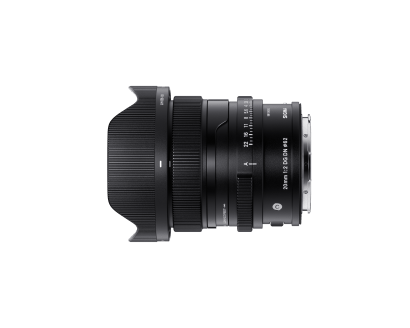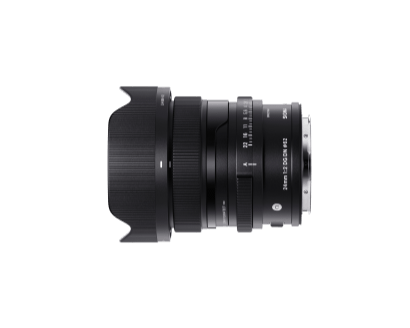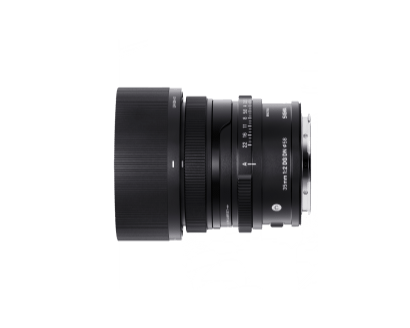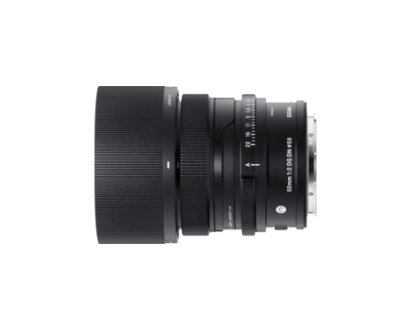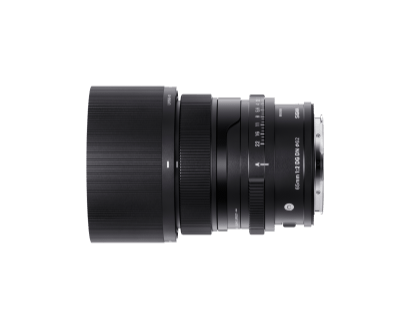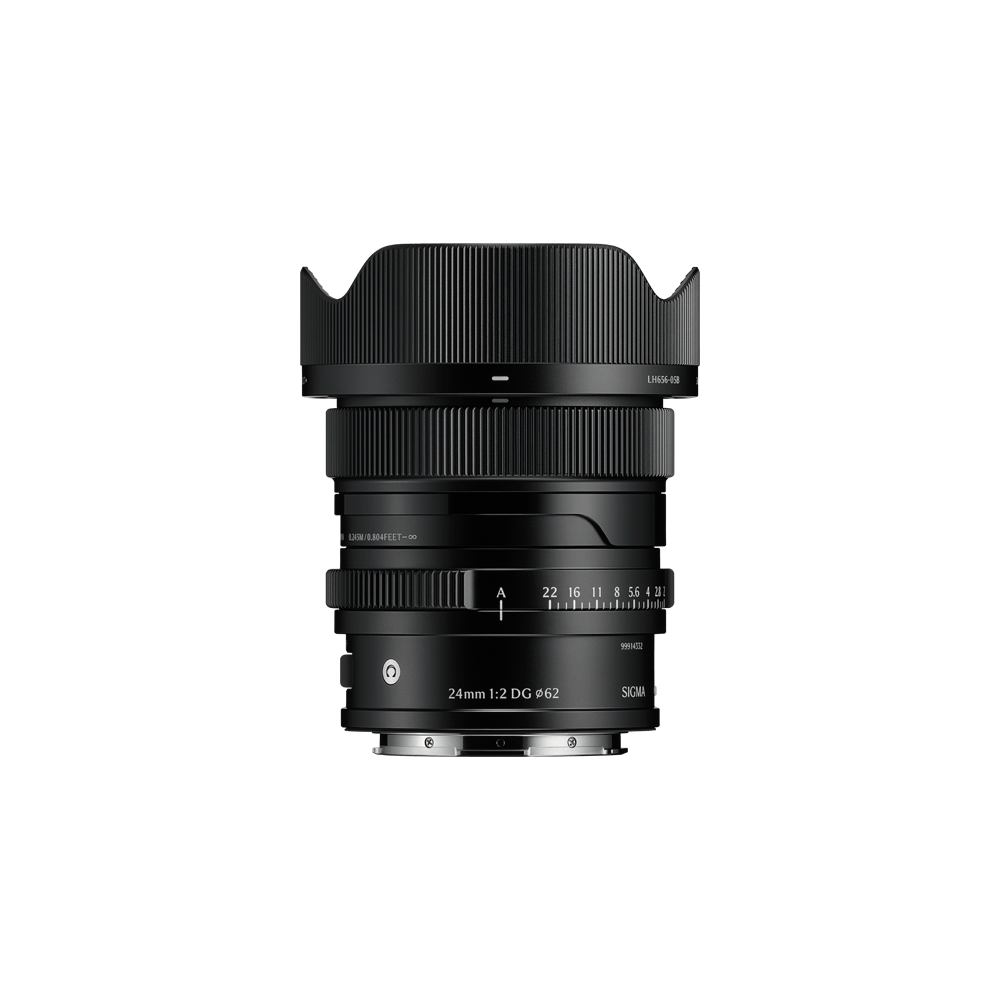
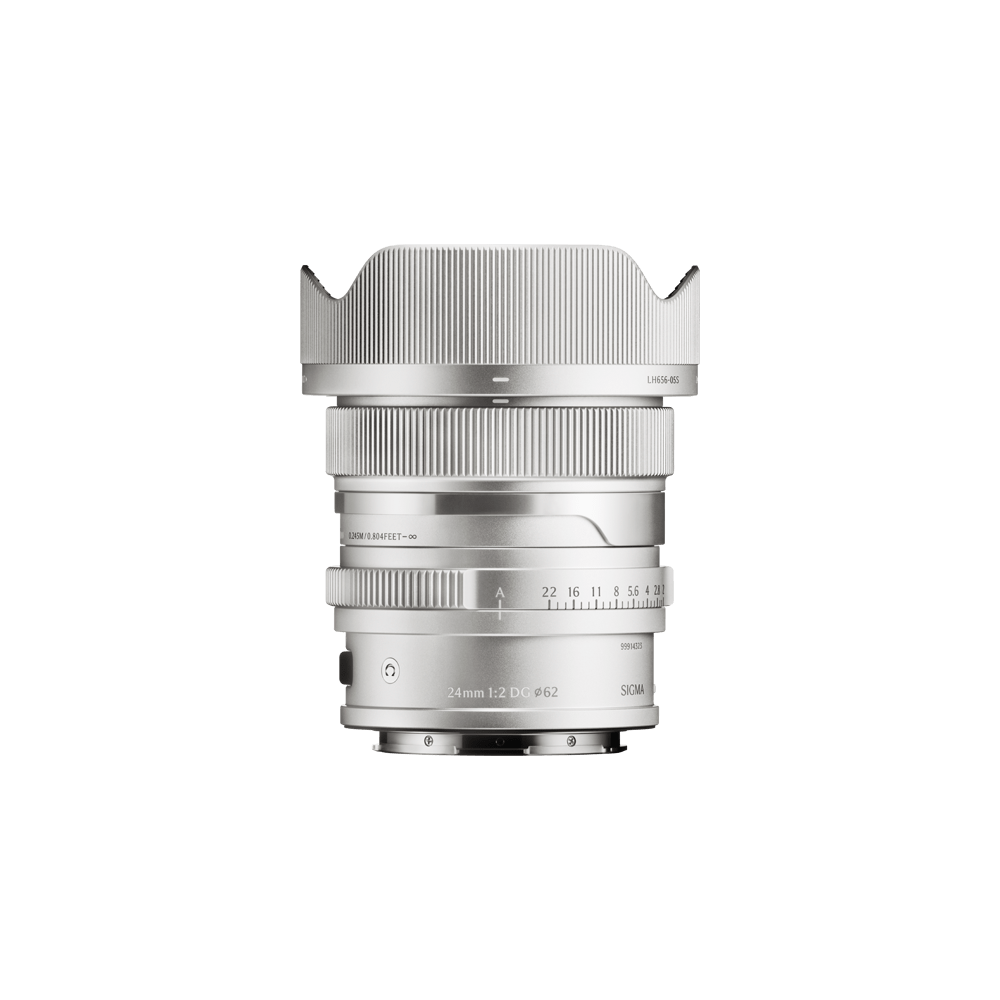
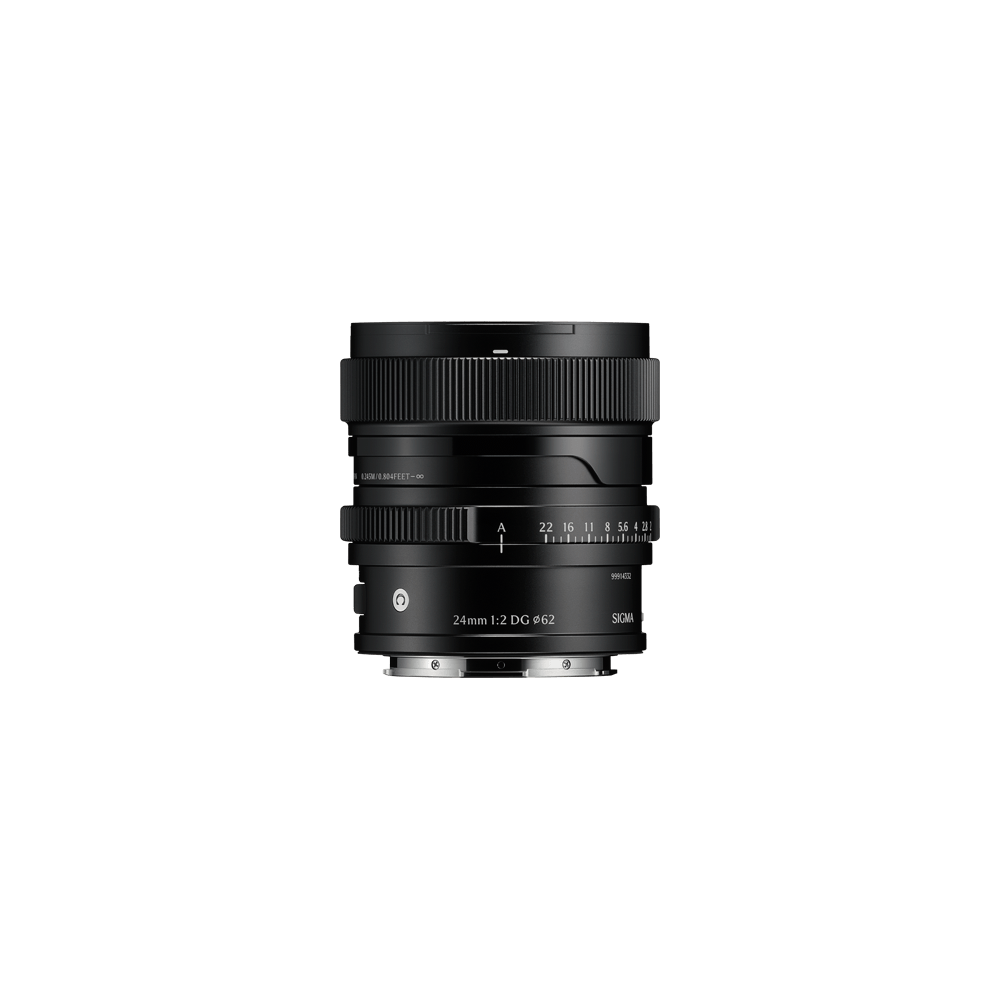
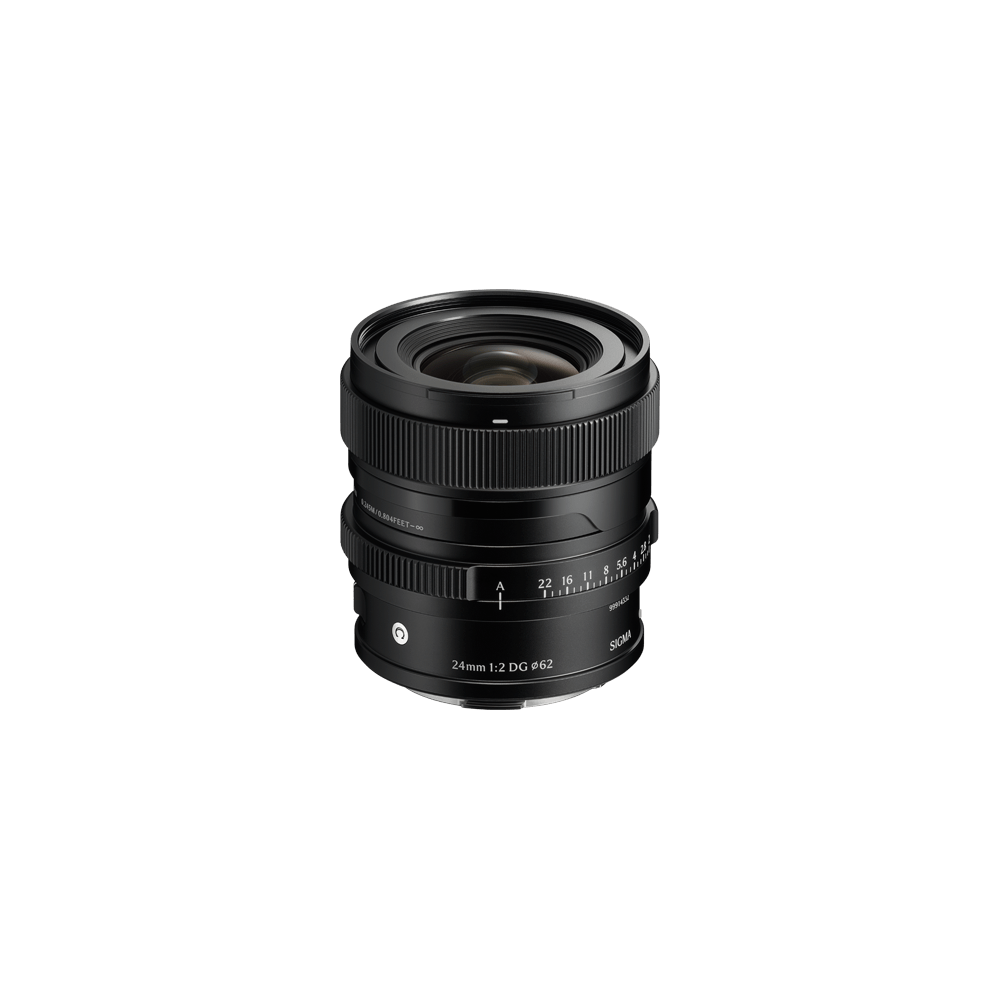




New
Contemporary
24mm F2 DG
Available mounts
- L-Mount(Black)
- L-Mount(Silver)
- Sony E-mount(Black)
-
Camera Type
Mirrorless
-
Corresponding Mount
L-Mount, Sony E-mount
-
Sensor Format
Full-frame [DG]
-
Lens Construction
13 elements in 11 groups (2 SLD, 1 FLD, and 2 aspherical lens elements)
-
Angle of View
84.1°
-
Number of Diaphragm Blades
9(Rounded diaphragm)
-
Minimum Aperture
F22
-
Minimum Focusing Distance
24.5cm / 9.7in.
-
Maximum Magnification Ratio
1:6.7
-
Filter Size
φ62mm
-
Dimensions (Diameter × Length)
L-Mount:φ70mm × 72mm / φ2.8in. × 2.8in.
Sony E-mount:φ70mm × 74mm / φ2.8in. × 2.9in.
*The length of a lens is measured from the filter surface to its mount.
-
Weight
L-Mount:365g / 12.9oz.
Sony E-mount:360g / 12.7oz.
-
Edition Number
C021
The three-digit code on the surface of the lens is to indicate the year the lens was first released.
(Since it is different from the year of manufacture, the release year and edition number may not match depending on the mount.) -
Supplied Accessories
・LENS HOOD(LH656-05B/LH656-05S)
・MAGNETIC METAL LENS CAP(LCF62-02 MB/LCF62-02 MS)
・FRONT CAP(LCF-62 IV)
・REAR CAP(LCR III)
・Pouch -
Mount / Product Barcode
L-Mount(Black):00-85126-94192-5
L-Mount(Silver):00-85126-94193-2
Sony E-mount(Black):00-85126-94181-9
-
Camera Compatibility
LINK
-
* L-Mount is a registered trademark of Leica Camera AG.
* This product is developed, manufactured and sold based on the specifications of E-mount which was disclosed by Sony Corporation under the license agreement with Sony Corporation.
-
I series Premium Compact Primes for mirrorless users
The Sigma I series features full-frame-compatible lenses that offer mirrorless users a new and better alternative, both in the experience of shooting with the lens and in the impressive results it is able to achieve.
One of the key advantages of mirrorless cameras is their smaller form-factor, and this new 24mm optic is designed to be perfectly matched to these more compact systems without sacrificing performance. This combination of superb optical quality with exceptional portability, not previously possible with DSLR systems, will bring new opportunities to this and future generations of photographers.
Simultaneously, Sigma is aware that, in this day and age when we have such huge diversity when it comes to what we use to photograph, as represented by smartphones, people look for something more than a mere act of “taking pictures” when they choose to own a camera and lenses.
Sigma’s excellence in development and processing technologies has been built up since it was founded in 1961, and has become further sophisticated with the introduction of the Sigma Global Vision in 2012. With this as a base Sigma has given careful thought to how photographers use and enjoy their lenses, including optical design, advanced functionality, build quality and the experience of picking up and using the lens, and with all of this carefully considered the I series was born. -
20mm, 24mm, 35mm, 50mm and 65mm - five lenses with F2 brightness in the lineup
-
New standards of optical performance for the Contemporary line
The Sigma 24mm F2 DG | Contemporary, like the Sigma 35mm F2 DG | Contemporary and the Sigma 65mm F2 DG | Contemporary , combines the highest level of optical performance even at its maximum aperture of F2 and a well-balanced body.
The lens uses two SLD glass elements and one FLD glass element to correct axial chromatic aberration, which is a particular concern with bright lenses. It also incorporates two high-precision glass-molded aspherical elements, made possible by the processing technology of Sigma’s sole production facility in Aizu. This has enabled the total number of lens elements to be kept down and the size and weight of the lens to be reduced, while providing excellent correction of various aberrations.
In anticipation of wide-angle lens applications, Sigma’s optical designers have ensured the lens resolution is extremely high, and is uniform from the center to the periphery of the image. Sagittal coma flare is also well suppressed, giving the lens a high degree of rendering power that makes it ideal for night sky photography.
The AF drive system incorporates a quiet, high-speed stepping motor. This allows photographers to capture every detail of the spacious 24mm scene with light AF.
-
Use of multiple high-precision aspherical glass molded lenses
The surface of molds for glass molding, which is a process that forms optical components by pressing glass materials at high temperatures, requires ultra-high precision. Sigma uses high-precision molds whose surfaces are controlled with an accuracy of ±5 nanometers (0.000005 mm) or smaller. High precision aspherical glass molded lenses archives both good aberration correction and compact lens size.

Mold for aspherical glass molded lenses
-
Exceptional I series build quality with a compact form-factor
All I series lenses have an all-metal construction. The precision-cut aluminum parts not only give the barrel a sleek, stylish finish, but provide superb durability that improves the quality of the entire product. Metal materials are also used in internal structures that slide with the operation ring for added robustness. These high-precision components crafted with Sigma’s cutting-edge metalworking technology are also used in Sigma’s CINE LENS line-up for professional cinematographers and provide a tactile, ergonomic feel that make the lens a pleasure to use.
The cover ring between the focus ring and the aperture ring has hairline processing that is also used for the rear cylinder of the Art line. This covering functions as a finger hold when attaching or detaching the lens.
-
Magnetic metal lens cap
The I series lenses are accompanied by a dedicated magnetic metal lens cap, in addition to a normal plastic cap. This dedicated metal cap clips to the front surface of the lens magnetically. It is no exaggeration to say that this meticulously crafted cap represents the finishing touch for the I series.
-
Magnetic metal lens cap holder LENS CAP HOLDER CH-11 (sold separately)
When a cap is removed from the lens it should have a proper place where it can be kept. Using this as a starting point, a cap holder using the magnetic force of the dedicated cap was created.
With the cap attached to the ring plate, and the plate clipped to a bag or belt, the cap is always within easy reach and is less likely to get lost. Plus, its elegant design is a stylish addition to a photographer’s equipment.
Lens construction
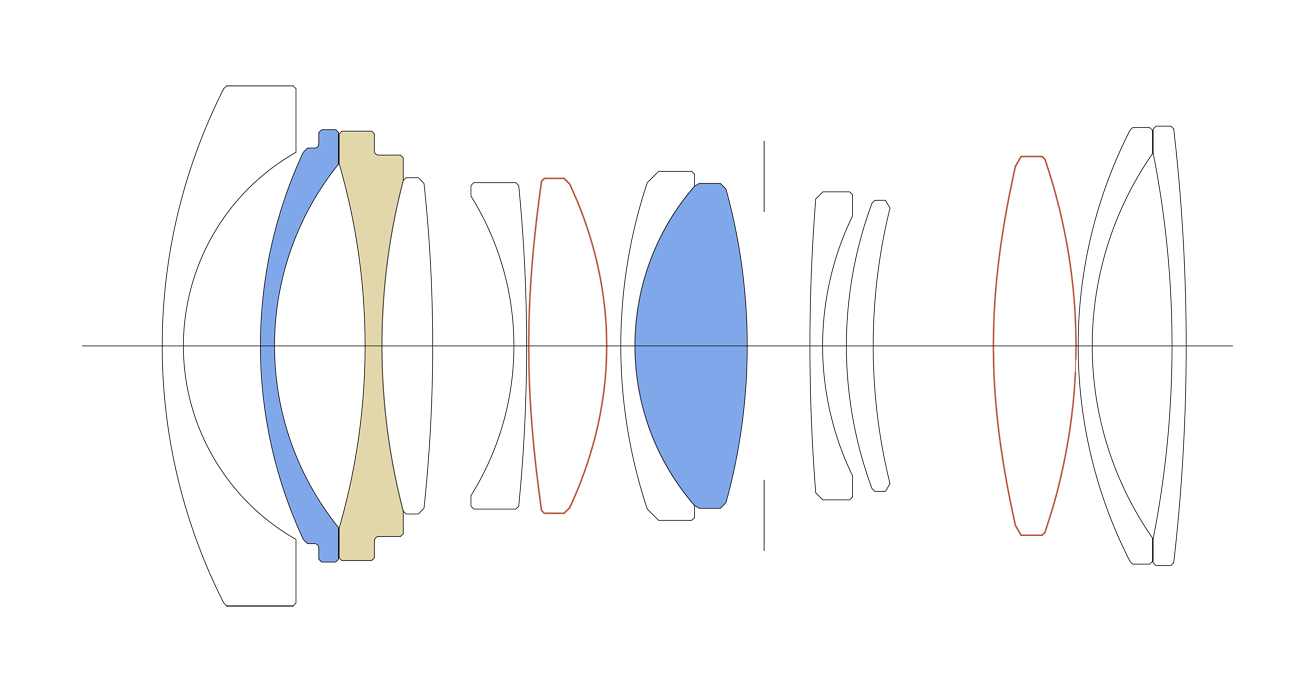
SLD glass
FLD glass
Aspherical lens
MTF Chart
The MTF (Modulation Transfer Function) is one of the measurements for evaluating a lens’ performance, and it shows how faithfully the contrast of the subject can be reproduced on the image plane. The horizontal axis shows the image height (distance from the center of the image in mm) and the vertical axis shows the contrast value (maximum value is 1).
The closer the 10 line pairs/mm curve is to 1, the higher the contrast and clarity of the lens is, and similarly, the closer the 30 line pairs/mm curve is to 1, the better the resolution and sharpness of the lens is.
*The MTF chart depicts the result at the wide-open aperture.
*For mirrorless lenses that support distortion correction, the horizontal axis shows the image height equivalent to when an L-Mount lens is attached to a Sigma L-Mount camera with distortion correction applied. (The effect of distortion correction may differ depending on the mount and camera used.)
*The spatial frequency indicates the variation on the image plane before distortion correction is performed.
-
Spatial frequency
S:Sagittal Line
M:Meridional Line
-
10lp/mm
-
30lp/mm
Diffraction MTF

Geometrical MTF

-
Lens construction: 13 elements in 11 groups, with 1 FLD, 2 SLD and 2 aspherical lens elements
-
Compatible with high-speed autofocus
-
Support DMF and AF+MF
-
LENS HOOD(LH656-05B/LH656-05S)
-
Magnetic metal lens cap (LCF62-02 MB/LCF62-02 MS)
-
Compatible with Sigma USB DOCK UD-11 (sold separately / for L-Mount only)
-
Designed to minimize flare and ghosting
-
Every single lens undergoes Sigma’s proprietary MTF measuring system
-
9-blade rounded diaphragm
-
High-precision, durable brass bayonet mount
*The sample images shown here were taken using the 24mm F2 DG DN | Contemporary. The optical performance is the same.

| Camera | SONY α7R IV |
|---|---|
| Shutter Speed | 1/640s |
| Lens F Number | F9 |
| ISO | 100 |
| Focal Length | 24mm |
| Photographer | Aya Iwasaki |

| Camera | SONY α7R IV |
|---|---|
| Shutter Speed | 1/1000s |
| Lens F Number | F4 |
| ISO | 100 |
| Focal Length | 24mm |
| Photographer | Aya Iwasaki |

| Camera | SONY α7R IV |
|---|---|
| Shutter Speed | 2s |
| Lens F Number | F3.5 |
| ISO | 100 |
| Focal Length | 24mm |
| Photographer | Aya Iwasaki |

| Camera | SIGMA fp |
|---|---|
| Shutter Speed | 1/4000s |
| Lens F Number | F3.2 |
| ISO | 400 |
| Focal Length | 24mm |
| Photographer | Pauline Chardin |

| Camera | SONY α9 |
|---|---|
| Shutter Speed | 1/320s |
| Lens F Number | F2 |
| ISO | 100 |
| Focal Length | 24mm |
| Photographer | Kazuyuki Hagiwara |

| Camera | SONY α7R IV |
|---|---|
| Shutter Speed | 1/320s |
| Lens F Number | F2 |
| ISO | 100 |
| Focal Length | 24mm |
| Photographer | Kazuyuki Hagiwara |

| Camera | SIGMA fp L |
|---|---|
| Shutter Speed | 1/2000s |
| Lens F Number | F2.8 |
| ISO | 100 |
| Focal Length | 24mm |
| Photographer | Maik Lipp |

| Camera | SIGMA fp |
|---|---|
| Shutter Speed | 1/1250s |
| Lens F Number | F9 |
| ISO | 250 |
| Focal Length | 24mm |
| Photographer | Pauline Chardin |
See the bigger picture.
The all-new 24mm F2 DG | Contemporary delivers exceptional edge-to-edge rendering power in an ultra-compact, all-metal body.
This impressive, wide-angle, I series prime is now available for L-Mount and Sony E-mount systems.
The 24mm F2 DG | Contemporary premium compact prime is the latest prime lens to be added to Sigma’s growing I series range. It joins four existing I series lenses as well as the new 90mm F2.8 DG DN | Contemporary, offering superb optical performance, a bright F2 aperture, an all-metal build and a manual aperture ring. Designed from the ground up for mirrorless systems it feels perfectly-balanced on modern full-frame bodies, and boasts exceptional resolving power that can keep up with the latest ultra-high-resolution cameras.
The lens’s advanced optical design produces sharp, high-contrast results from the center of the frame to the far corners, and together with its F2 aperture and wide angle-of-view it’s an excellent choice for night sky photography, events and interiors. Owing to its compact size the lens can be carried around effortlessly, which makes it perfect for day-to-day use. The high quality, all-metal construction, which is found on all of Sigma’s I series models, makes the experience of owning and operating this lens extremely satisfying.
This new full-frame 24mm F2 prime is designed for photographers who need a sharp, fast, robust, wide-angle optic that will not weigh them down. It is available for L-Mount and Sony E-mount systems.
